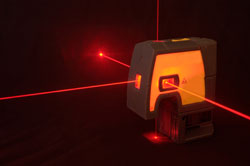Upgrading high energy, ultra-fast experiments
Modern physics experiments investigating new domains such as particle acceleration or laser assisted nuclear physics rely heavily on ultra-high-intensity pulses. Despite the recent advances in laser technology, there are still imperfections in the pulse temporal profile coming from high level amplified spontaneous emission pedestals and pre-pulses. Addressing this need the SHARP project focused on the development of new methods and tools in order to achieve the optimal temporal contrast for laser-material interaction. In this context the associated non-linear effects can result in significant reduction of the amplified spontaneous emission level in relation to the ultra-fast (femtosecond) pulse. One of the key project results involved direct amplification of high-power visible femtosecond laser pulses with the aid of a xenon fluoride (XeF) (C-A) laser. The compact photolytic device displays a low non-linear index of refraction that allows direct amplification, without pulse stretching. Moreover, it can also provide very high energy, ultra-fast laser pulses in the blue-green region. Due to its low small signal gain and a relatively long radiation lifetime (100ns) the photolytic xenon fluoride gas medium offers a low level of amplified spontaneous emission. In addition to this, the medium shows a broad amplification bandwidth along with a rather high saturation fluence. These capabilities make the device ideal for use in the development of ultra-high power laser systems (up to petawatt levels). It has been designed with the least possible complexity in order to allow cost savings in production. On the other hand, its design limits the occurrence of pre-pulses offering considerable minimisation of energy losses. Therefore, the device is very suitable for obtaining high contrast, high power femtosecond pulses and can be used in multi-terawatt and even petawatt ultrafast laboratory facilities. Examples of high-field physics experiments involve time-resolved dense plasma diagnostics, generation of laser plasma and X-ray sources, ignition of photonuclear reactions, particle acceleration or exploration of the relativistic regime of radiation-matter interaction.







